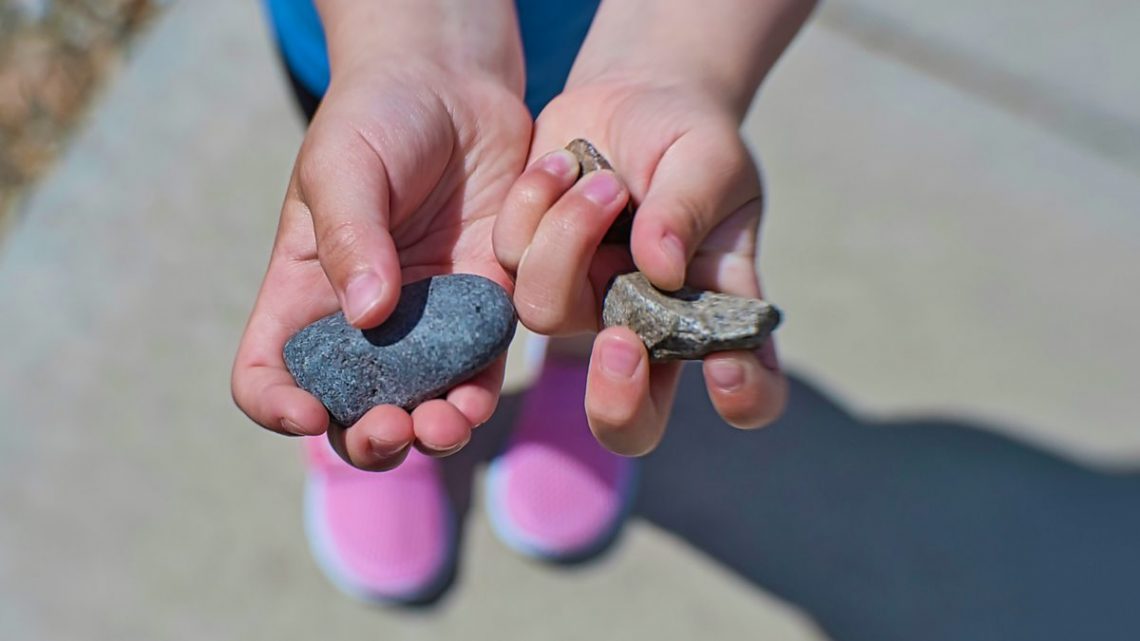I’ve always had a peculiar relationship with the earth beneath my feet. As a child, I remember picking up stones during walks, marveling at the different textures, colors, and hidden patterns. Something about holding a piece of the world in my hand made it feel more intimate, like I was carrying a fragment of that place with me. Years later, this curiosity evolved into a small ritual: whenever I travel, I bring home tiny stones, no larger than a coin, tucked carefully into my bag. At first, it seemed trivial, almost childish, but over time, the habit revealed an unexpected depth.
Each stone tells a story, though its voice is quiet. I still remember the first one I kept on my adult travels—a smooth, obsidian piece I found along a riverbank in a town I had stumbled into by accident. I didn’t know anyone there, I had no plans beyond wandering, and yet, picking up that stone felt like claiming a memory before it could fade. It felt like a tiny anchor, a physical proof that the day had existed exactly as it did. When I hold it now, months later, I can feel the coolness of the river, the way sunlight fractured through the leaves, and the faint smell of wet earth and moss that seemed to cling to that place.
Over time, the stones accumulated. Some are rough, jagged, their edges still sharp as if they carry the force of the mountains they came from. Others are smooth, worn by rivers or oceans, and they fit perfectly into the curves of my palm. I’ve tried to organize them once, grouping by size or color, but the order always feels artificial. The real beauty is in their randomness, their contradictions. A black volcanic fragment sits next to a white marble pebble, and I see in that pairing the unexpected encounters travel always offers—people, sights, smells that never seemed to belong together yet create a harmony in memory.
What fascinates me most is the way these stones serve as triggers for memory. I can hold a single piece and instantly be transported to a quiet street in Lisbon, the salty breeze of the ocean brushing my face, the chatter of a café spilling into cobblestone alleys. Another stone carries me to a remote forest trail in the mountains, where the only sounds were the occasional snap of a twig and the distant call of a bird I’ve never been able to identify. These fragments of earth anchor memories more vividly than photographs ever could. The tactile connection grounds me; I can feel the contours, the slight unevenness, the temperature of the stone, and suddenly the memory isn’t just visual or emotional—it’s physical, layered, and complete.
There’s also a meditative quality to the habit. When I unpack my bag or reorganize my shelves, I handle the stones one by one. I trace their surfaces, roll them between my fingers, notice how some catch the light differently. It slows me down, forcing me to pause in a way that the rush of everyday life rarely allows. Stones, I’ve realized, teach patience. They’ve been shaped over centuries, unhurried, indifferent to human schedules. Holding them reminds me that not everything worth noticing can be rushed. There’s a quiet resilience in their existence that feels reassuring when life feels hectic or unpredictable.
I’ve also begun to notice how the stones mirror my own moods. When I feel restless, I pick up a jagged, heavy piece, as if its weight can anchor my thoughts. When I’m reflective or melancholic, I reach for smooth, pale stones that slip easily through my fingers, their surface inviting contemplation. In a way, they have become silent companions, reflecting and amplifying emotional states without judgment or expectation. There’s comfort in that. Unlike souvenirs that scream for attention, these stones exist quietly, requiring only that I notice them.
The habit has affected how I travel, too. I find myself wandering off beaten paths, drawn to unexpected spots—a little creek hidden behind a stand of birches, a patch of volcanic rocks warmed by the sun, a pebble-strewn beach at the far end of town. I notice textures and formations others might overlook. Collecting stones has made me more attuned to the physicality of place, to the rhythms and patterns of the world I inhabit for only a brief time. The stone isn’t the destination; it’s a lens through which I experience it fully.
Friends often find it odd when I tell them I carry tiny rocks across continents. “Why not a postcard?” they ask, or, “A photograph captures it.” And yes, photographs capture sights, but stones capture essence. They are memory condensed into a tangible object, a small shard of a larger experience. When I pull out a stone from my pocket months later, I am not just recalling a place—I am re-entering it, if only for a fleeting moment. The sharpness of its edge, the coolness, the way it rolls lightly in my hand—all of it carries me back, bypassing language and thought entirely.
There’s an intimacy in the practice as well. Unlike souvenirs bought in tourist shops, these stones are unassuming, often invisible to the casual observer. They don’t announce their origin, but for me, they hold entire stories. I find myself speaking to them quietly, recounting what happened in that place, how the air felt, who I encountered, what I saw and felt in the gaps between events. It’s a private conversation, a way of internalizing experiences that might otherwise drift away.
Over the years, I’ve developed a collection that occupies a small wooden box on my shelf. It’s chaotic, beautiful, and entirely mine. I occasionally rearrange them, sometimes just to feel the texture of each in sequence, or to marvel at the variety. But mostly, they sit silently, witnesses to my journeys, little anchors to the world beyond my apartment walls. And sometimes, when a day feels heavy or colorless, I open the box, let my fingers brush over the stones, and suddenly the world feels bigger, more textured, and endlessly intriguing again.
Keeping these small stones is more than a habit; it’s a philosophy, a way of seeing and inhabiting the world. Each piece is a reminder to notice, to feel, and to honor the places I pass through. It is evidence that even the smallest fragments can hold vast experiences, and that memory, like stone, can be both enduring and delicate. In a world of fleeting moments and disposable souvenirs, the stones remind me to slow down, to appreciate the textures underfoot, and to carry pieces of the world with me in a way that photographs, postcards, or digital images never could.





